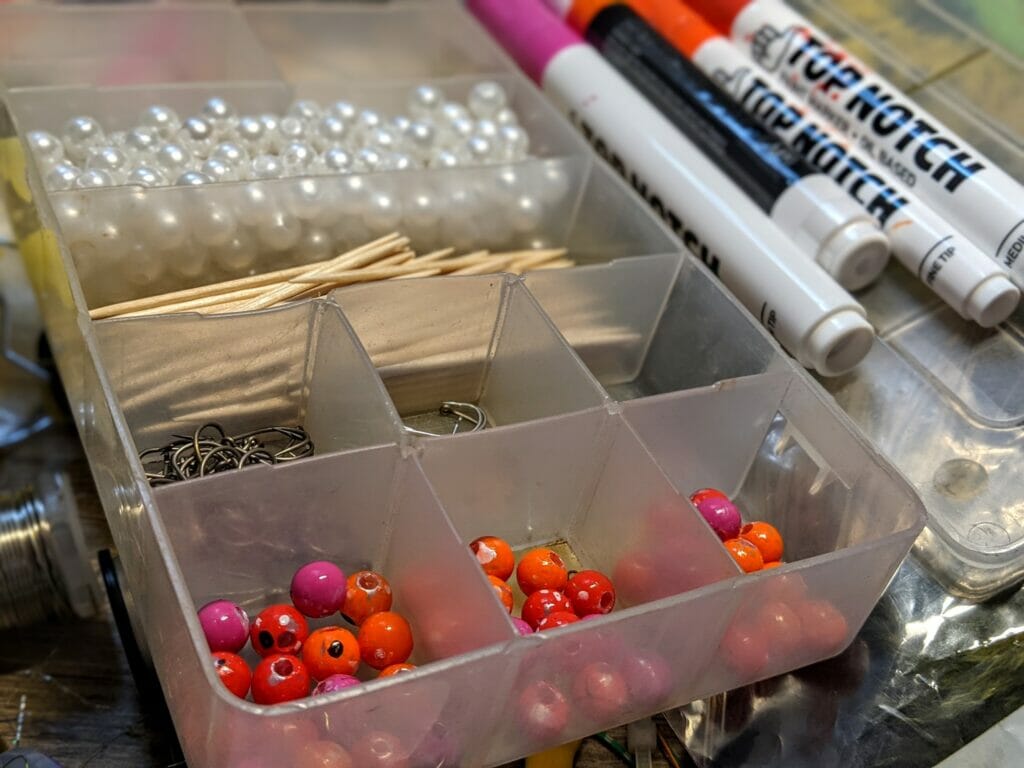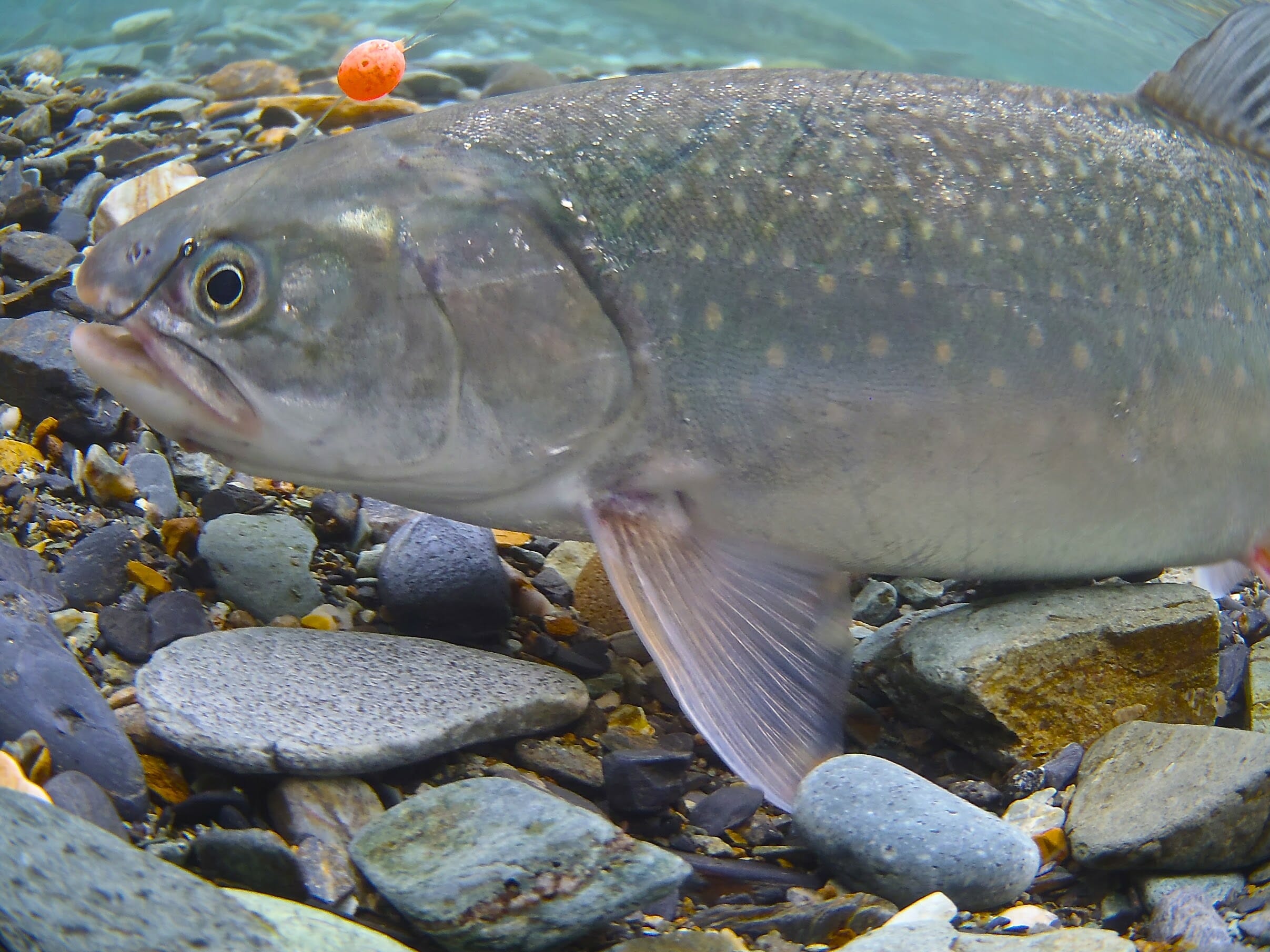A nice Dolly Varden that fell for a pegged bead. Chris Hunt photo.
The ethics and the logic examined
Fly fishing is a craft that appeals to the purist in all of us — the notion that fooling a fish by casting something that resembles that animal’s natural food source without resorting to bait is something lots of fly anglers appreciate.
But sometimes, the bait is the natural food source. Worms, for instance, wash into trout streams, particularly during high water. And salmon eggs provide vital sustenance for trophy rainbow trout and big Dolly Varden in northern climes. But, for some reason, the thought of casting a “fly” that resembles a worm or a salmon egg is, for some anglers, an ethical violation of the unwritten rules of the pursuit.
I’m in Southeast Alaska this week, and the rivers and streams are choked with migrating pink salmon (we’re hoping to find a few silvers before the trip is up). Chums, too, are in the water, and in some cases, they’re already spawned. That means there are eggs in the water, and the area’s sea-run cutthroat trout, rainbow trout and, most obviously, its Dolly Varden are seeking out eggs and crushing them.
Enter what is, in my estimation, the most ethical way to fish an egg “fly.” It’s the pegged bead — the target of much derision from the purist crowd, but an oft-used technique to catch big trout and char when salmon eggs are in the water.
You tell me? What’s more ethical? Casting an imitation egg and ensuring an easier and safer release, or throwing a giant articulated streamer and having to dig into the fish’s gullet with forceps to retrieve the deeply hooked fly?
The technique is simple. Simply slide a plastic bead — usually orange, pink, red or purple (but I’ve had luck with chartreuse and even pearl beads) — onto your tippet. Tie a bare hook to the end of your tippet (I like a short-shanked hook with a wide bend, like a size 8 or 10 nymph hook, and I like to pinch the barb). Then, slide the bead down the tippet until it’s an inch or so above the bare hook. Insert the end of a toothpick into the eye of the bead — this will “peg” the bead to the tippet. Then, simply break the toothpick off at the bead eye.
This rig can be fished like a nymph, either high-sticked through fishy runs or even under an indicator. I prefer the former, and I use non-lead weight pinched above the bead if I need to get the “fly” down a bit. The set-up is effective — it might be the best way to catch egg-eating trout and char when eggs are in the water.
But the real reason I like this method is that it almost never results in a fish being hooked deep. The general idea is that the hungry char or trout will pounce on the egg and quickly realize it’s not a legit chunk of easy protein, and spit it out. However, that initial hit is generally pretty aggressive, and the angler can usually feel it. When that bump comes, just lift the rod tip. More often than not, the fish is hooked directly in the jaw, and, with a barbless hook, the release is easy.

For those who challenge the ethics of the pegged bead, this is usually my answer: certainly, you can catch big Dollies, cutthroats and rainbows on streamers, but I guarantee you, if you’re going to release your catch, the pegged bead will lead to fewer injuries to the fish and, most importantly, a better survival rate for the fish that are released.
You tell me? What’s more ethical? Casting an imitation egg and ensuring an easier and safer release, or throwing a giant articulated streamer and having to dig into the fish’s gullet with forceps to retrieve the deeply hooked fly?



